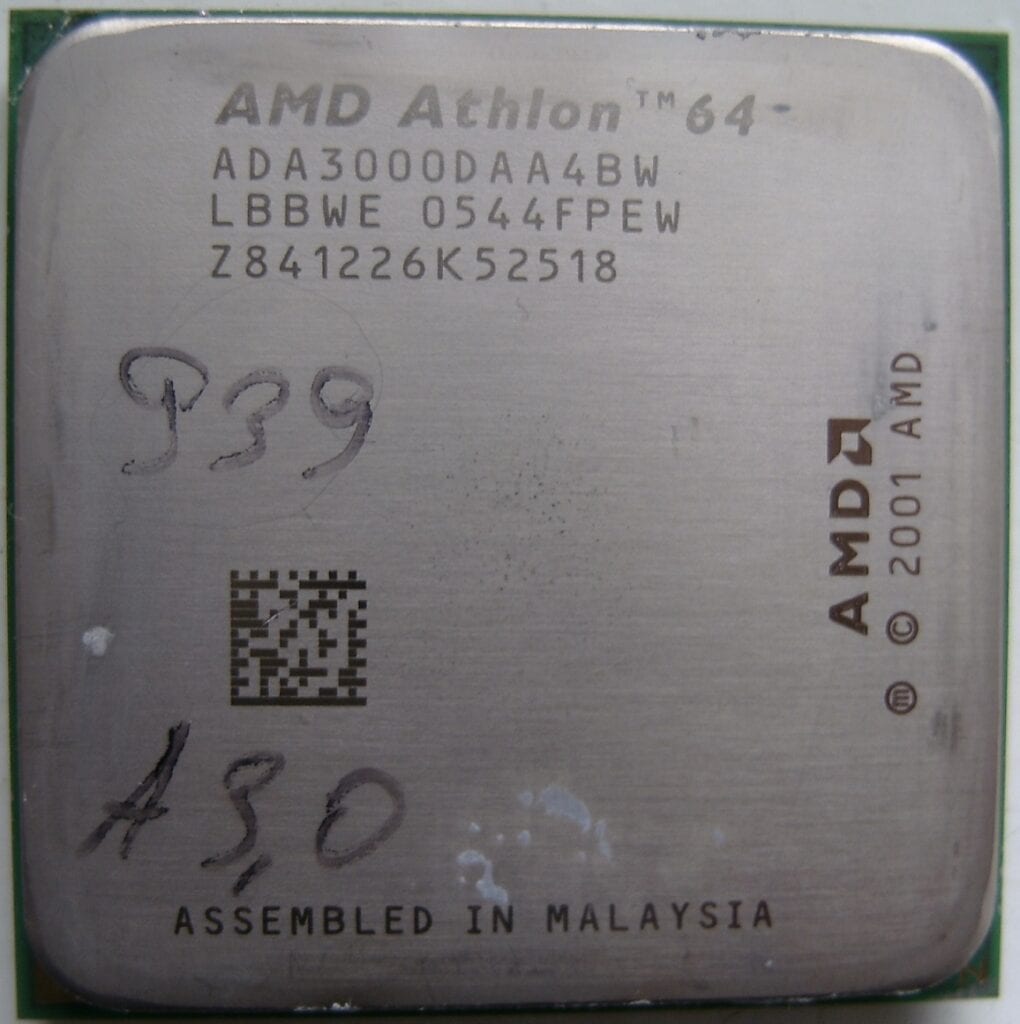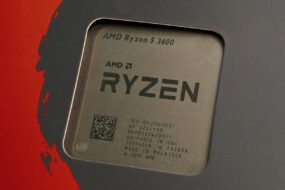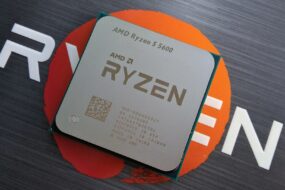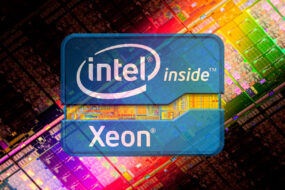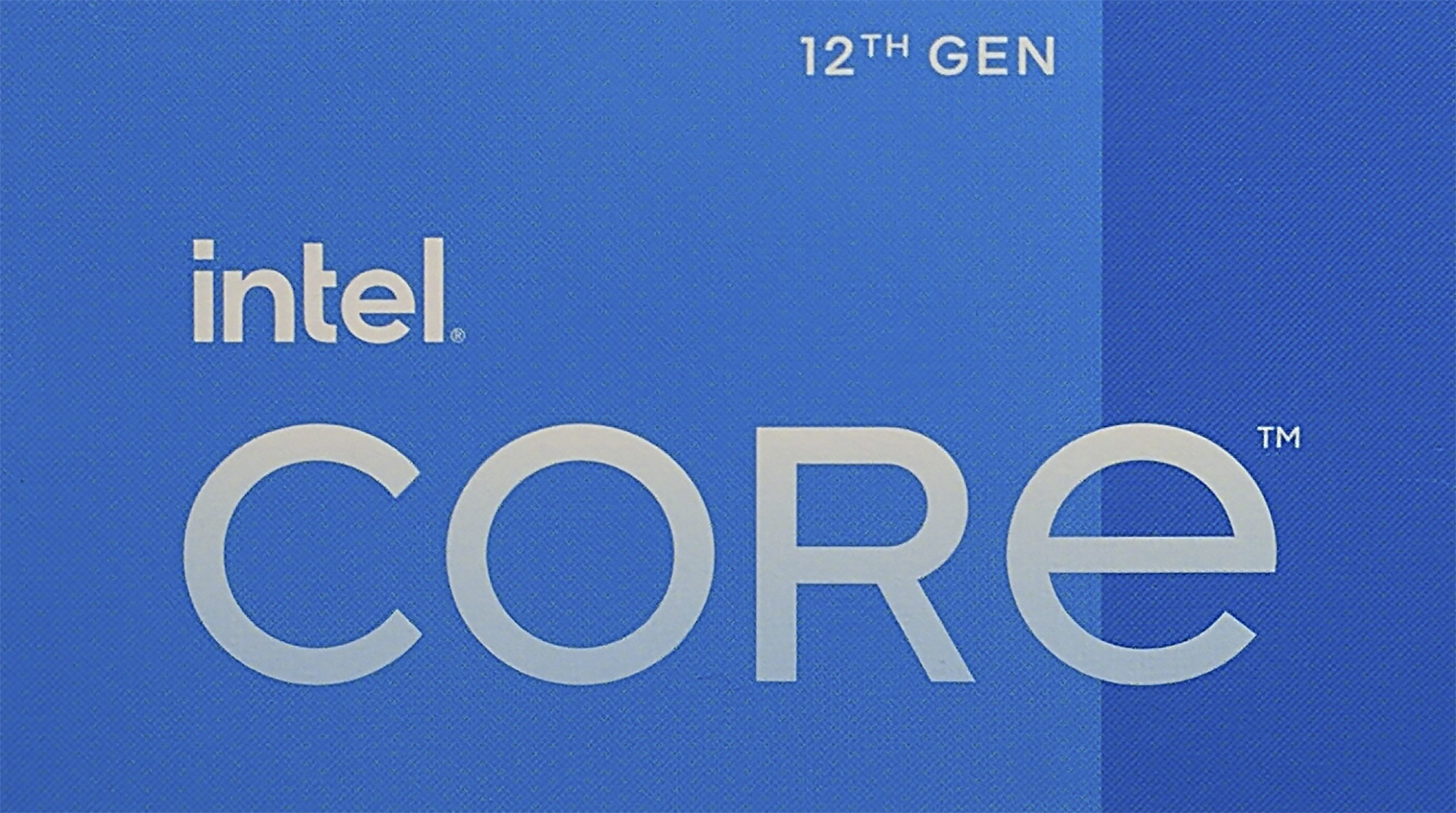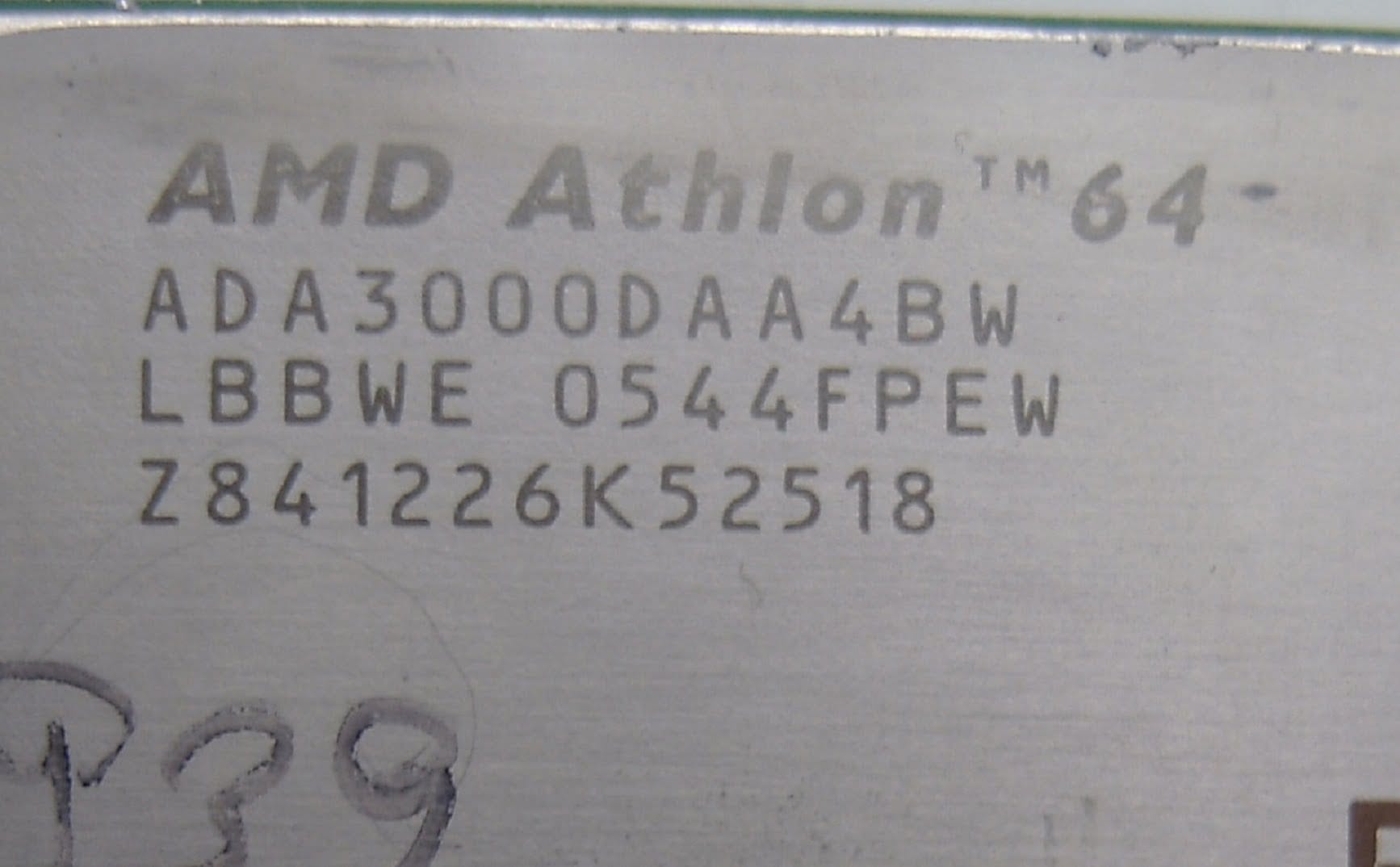
Almost a dozen years after the release of Intel Pentium 4 and AMD Athlon 64 processors, I can say with confidence that I have warm feelings for both lines. However, I value each of them for completely different features:
While in Pentium 4 I am amazed and fascinated by its overclocking potential, Athlon 64 surprises with its high performance and excellent energy efficiency.
At the time the Intel Pentium 4 and AMD Athlon 64 began selling, the competition between the two processor giants reached its culmination. It was necessary to bring something new and powerful to the market: it had to be such processors that could reign not only in the segment of home solutions but also in the server sector. AMD Athlon 64 and Opteron, the first representatives of the K8 architecture, became such chips.
What has changed in it compared to the K7 (Athlon XP)? The first is that the RAM controller migrated from the motherboard directly to the processor. And of course, the second, most important thing is support for new 64-bit instructions. At that time it, of course, did not justify itself, but even then the applications that were made for it showed a certain increase in performance.
Another important factor was that a 64-bit operating system could run with 4GB of RAM or more. That was irreplaceable for small server solutions, for example.
At the moment, for the normal operation of games and programs, the amount of RAM must exceed 4GB. New games like GTA VI and Crysis will never run smoothly on so little RAM.
Speaking about Grand Theft Auro IV, and modern games: The old single-core Athlon 64 and Pentium 4 chips can no longer provide decent performance in the latest generation of games. What can we say – not all dual-core models now provide acceptable frame rates?
Based on all this, we can safely say that such processors as Athlon 64 and Pentium 4 are out of work. But they are still in the system blocks of many people. Let’s look at what the old Athlon 64 is capable of in 2009. Today’s article will tell you about overclocking and testing the Athlon 64 3000+ processor, the lowest-frequency representative of the practically extinct 939 sockets.
Let’s take a look at the screenshot of the CPU-z utility:
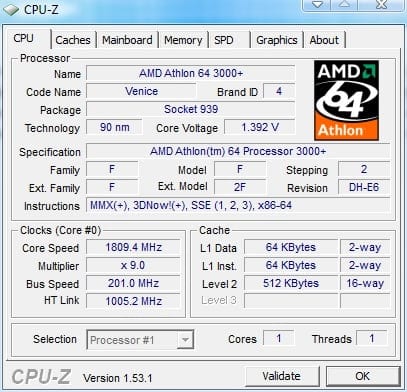
Our AMD Athlon 64 3000+ is based on the Venice 90nm core of revision E6. The base supply voltage of the core is 1.392V. The chip runs at 1800MHz clock speed and is equipped with a 512KB L2 cache.
Test setup
- CPU: Athlon 64 3000+
- Cooling system: Cooler Master Hyper TX3
- Motherboard: Biostar NF4UL-A9 (BIOS revision 6.00 PG)
- RAM: Apacer 512MB PC3200 (2.5-3-3-8)
- Video card: XpertVision 8500GT
- HDD: Seagate ST340016A 40GB
- Power Supply: Microlab 360W
Software
- Microsoft Windows 7 Home Premium 6.1.7600
- CPU-Z 1.53
- GPU-Z 0.3.4
- Crystal Mark 2004
- 3D Mark 2001/2003/2005
- nVidia Force Ware 162.22
- DirectX 9c обновление за август 2009 года
- CineBench 9.5
- Light Ware Render Bench
The GeForce 8500GT video card was taken for a reason. As it seemed to me, with the help of it I will be able to track the change in processor performance due to overclocking the chip and graphics card. To do this, I first ran tests in 3DMark without overclocking the video card, and then in overclocking.
GeForce 8500GT looks like this without overclocking :
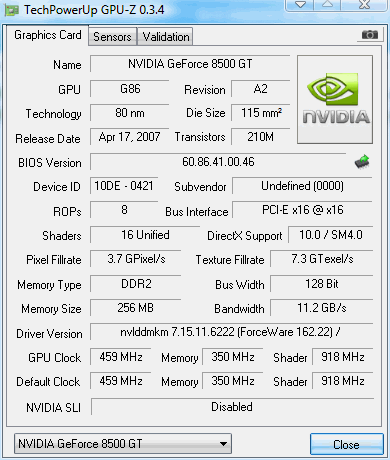
Somewhat unattractive, isn’t it? But everything changes thanks to her excellent overclocking potential!
The result of overclocking the GeForce 8500GT video card is 732 MHz for the main unit, 1458 MHz for the shader domain and 902 MHz for video memory:
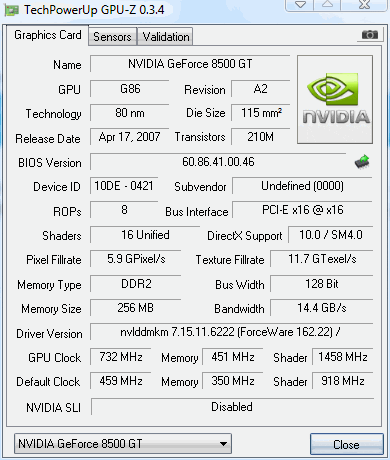
In general, for such an old processor as Athlon 64 3000+ this video card should be enough.
Overclocking Athlon 64 3000+
As soon as I started overclocking, I immediately realized that I came across an extremely strange and unsuccessful copy. Our Athlon 64 3000+ couldn’t get 2500MHz. This alignment threw me into a stupor.
The temperature did not exceed 50 degrees Celsius. The HT multiplier was reduced to 3x, the RAM worked at 266MHz, the core voltage was increased from the base 1.4V to 1.6V, but I could not advance above 275MHz on the bus.
Long torture of the processor found out that it was it who was to blame since when the multiplier was reduced, the motherboard quietly passed tests at a system bus frequency of 300 MHz and higher.
I came across a strikingly unsuccessful copy. And for this, the result of overclocking was a funny frequency of 2478 MHz:
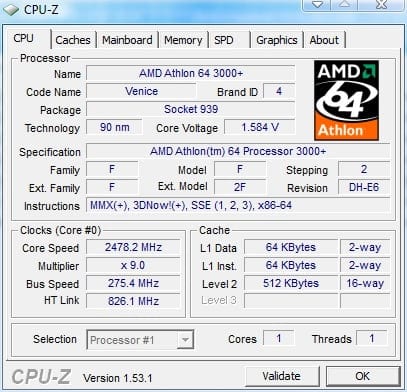
In any case, it’s still better than no overclocking at all. The increase in frequency of 678 MHz I think is quite tolerable. At the same time, the RAM worked at 378MHz DDR.
Максимальная же частота на которой мне удThe maximum frequency at which I was able to pass the CPU validation was 2528 MHz. However, as I said, they did not succeed: when trying to pass the S&M test, the processor freezes in the first minute. It is quite possible that he did not have enough power, but I completely refused to increase the voltage to more than 1.6V. Due to too high temperatures and not the best power system on the motherboard, the test hardware could fail.
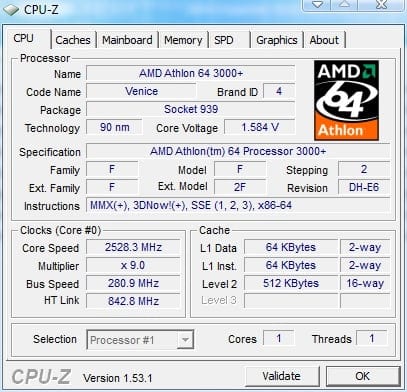
But it’s time to move directly to testing.
In 3DMark graphics benchmarks, I decided to test the chip in the following modes:
- The base processor – the base video.
- The base processor – video overclocked.
- Processor overclocked – video at par.
- Processor overclocked – video overclocked.
Tests
3DMark
A very interesting picture is observed in the 3DMark charts. Let’s start parsing in order:
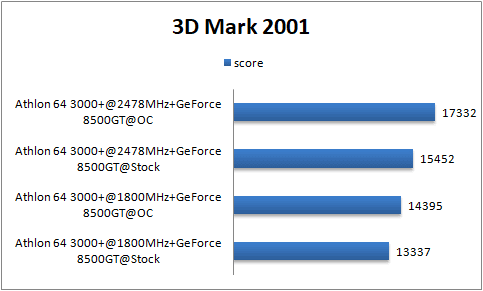
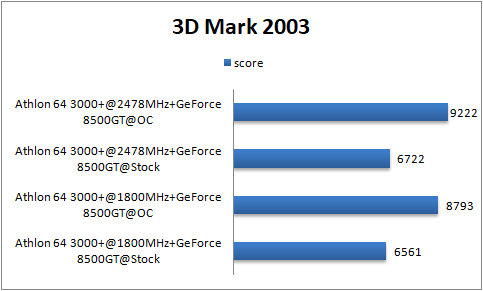
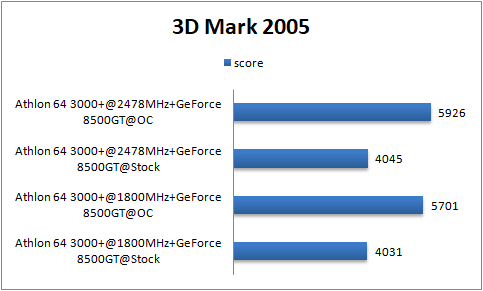
As we all know, 3D Mark 2001 is a very processor-dependent test. Here, overclocking the processor brings the greatest dividends, but you need to take into account that overclocking a video card also does not weakly affect the growth of “parrots”. The most profitable option here would be to overclock both components.
3D Mark 2003 believes that the Athlon 64 3000+ processor is enough for the 8500GT video card both in the nominal mode and overclocked to 2478 MHz. But Athlon cannot cope with its overclocked version at the base frequency, only thanks to overclocking.
And finally, 3D Mark 2005 shows exactly the same results as 2003, except that the 8500GT video card is already critically lacking in power.
Resident Evil 5
In the Resident Evil 5 benchmark, I used the built-in benchmark. All settings were set to a minimum, resolution 800×600, in order to ensure the minimum dependence on the video card:
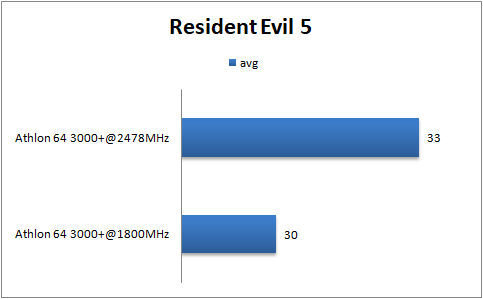
As you know, this game is well optimized specifically for dual-core processors, and therefore overclocking at 600MHz had practically no effect on the performance of the processor.
However, if you really want to play RE5, then the 30fps limit won’t stop you.
For comparison: with the same video card, the Athlon II X2 240 overclocked to 3600 MHz demonstrates 38-46 frames at maximum settings (at a resolution of 1024×768).
Rendering an image
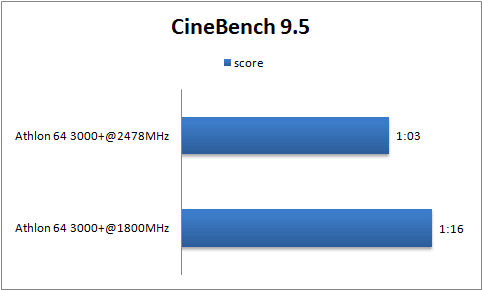
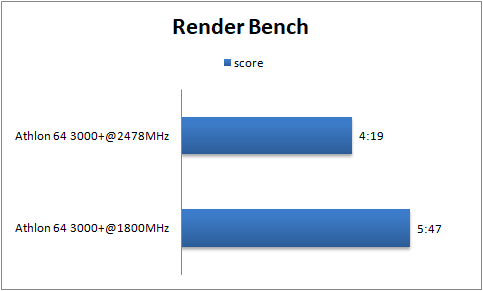
The performance gain is quite noticeable! A 20% increase in speed will not hurt anyone, so overclocking is more justified here.
Crystal Mark 2004
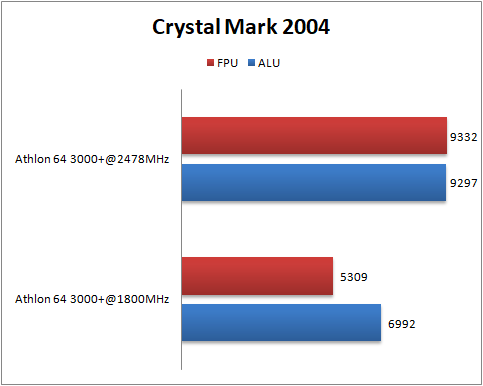
40% increase and 30% increase, not very bad, we can even say that it is excellent! Overclocking justifies itself here.
Conclusion and summing up:
Despite the disgusting overclocking potential of Athlon 64 3000+, I liked it: even when the power supply was raised to 1.6V, it remained rather cold. As I already said, when using a relatively cheap cooler from CoolerMaster, the temperature did not rise above 48 degrees.
Overclocking, of course, is far from being a record, but quite bearable, especially since the performance has increased by about 20-30%.
For the purchase of this processor in 2009, it is not suitable. But for those who already have it, and even more so it works in base value, this article will be very interesting, since it also touches on such important aspects as dependence on the installed video card.
We can deduct from this material that it is not worth putting something more productive than NVIDIA GeForce 8500GT into such a system.
